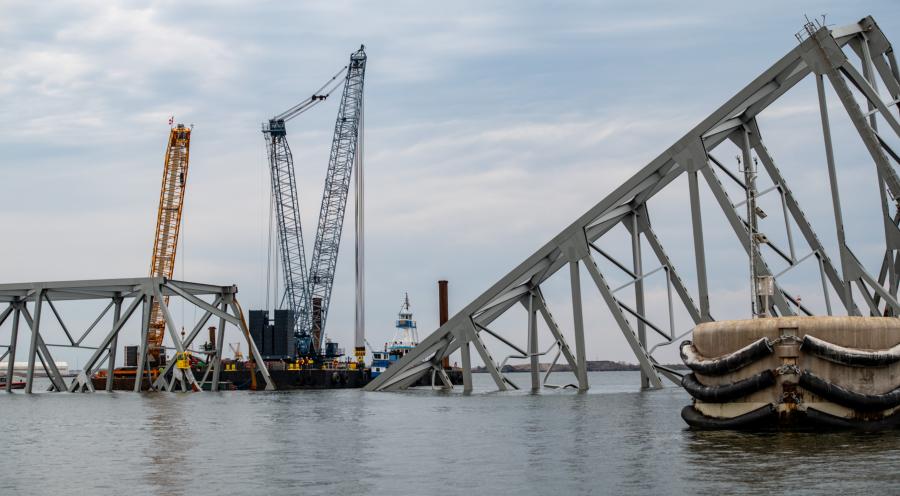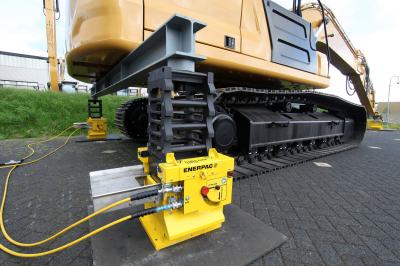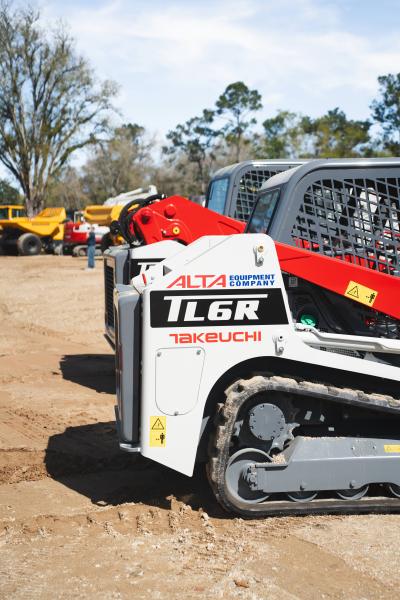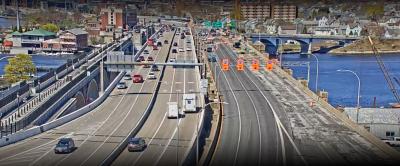U.S. Coast Guard Petty Officer 3rd Class Kimberly Reaves photo
Salvage operations on the Francis Scott Key Bridge commenced March 30, 2024, in Baltimore. Salvage teams use an exothermic cutting torch to systematically separate sections of the steel bridge, which will be taken to a disposal site.
When the container ship Dali rammed the Francis Scott Key Bridge in Baltimore, the 100,000-ton vessel sent the bridge and support structure crashing into the Patapsco River.
The accident snarled a key part of Interstate 695, which carries traffic around Baltimore. In addition, the crash brought the Port of Baltimore to a virtual standstill. Global shipping and supply chain woes are mounting because of the incident.
Just getting the area open again to shipping and vehicular traffic will require some herculean efforts from the construction industry.
New Channels
Authorities reported that the first of a series of small channels has just been opened. The channels will allow limited shipping at the Port of Baltimore for the first time since the accident.
Rear Admiral Shannon Gilreath of the U.S. Coast Guard said at a news conference that the channel is north of the crumpled bridge and will allow commercial barges and tugboats to travel in and out of the port. This first channel is 11 feet deep.
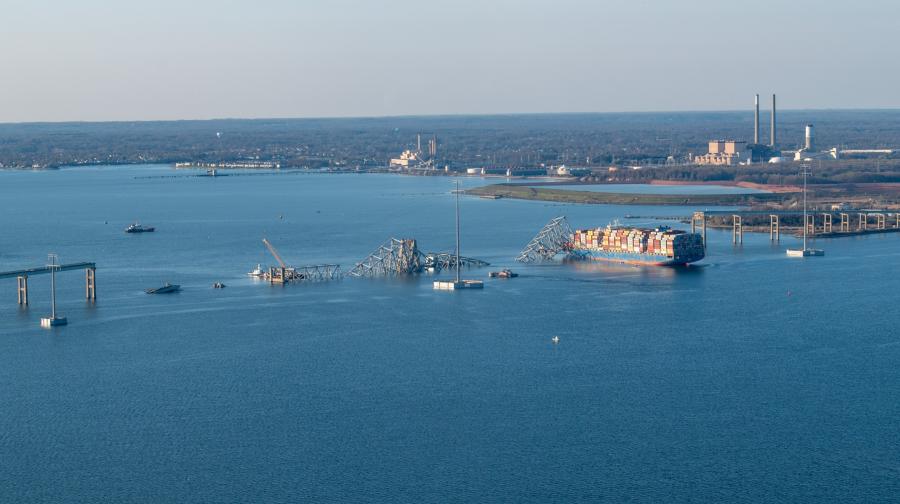
U.S. Coast Guard Petty Officer 3rd Class Kimberly Reaves photo
Gilreath said the channel is the first of three increasingly deeper temporary channels that will eventually allow more traffic to the port. The port is one of the largest in the nation.
"By opening this alternate route, we will support the flow of marine traffic into Baltimore," said Coast Guard Captain David O'Connell. He serves as the federal onsite coordinator for the bridge response.
Even in an era of mega construction projects with big budgets, this project is unique.
Gilreath said at a news conference the recovery will move forward in three phases: opening the channel, freeing the Dali and finally removing the remaining debris from the river.
"The bridge needs to be broken up into right-size pieces that can be lifted," said Gilreath. The enormity of this task is that huge sections of the Key Bridge sitting on the Dali weigh more than 3,000 tons. Gilreath reported that construction crews removed a 200-ton section of the bridge and were working on lifting a 350-ton piece.
An armada of construction equipment has been shipped to Baltimore to help remove the debris. One of the construction goliaths that has arrived is the Chesapeake 1000, capable of lifting 1,000 tons. An additional 10 cranes, 10 tugs, nine barges, eight salvage vessels and five Coast Guard boats are assembling with more to come.
The construction job is complicated while divers cautiously negotiate the wreckage in the murky waters. Sharp shards of steel jut out of the water with some pieces of wreckage weighing approximately 200 tons each. A 230-ton land-based crane will offload and process the wreckage at Tradepoint Atlantic.
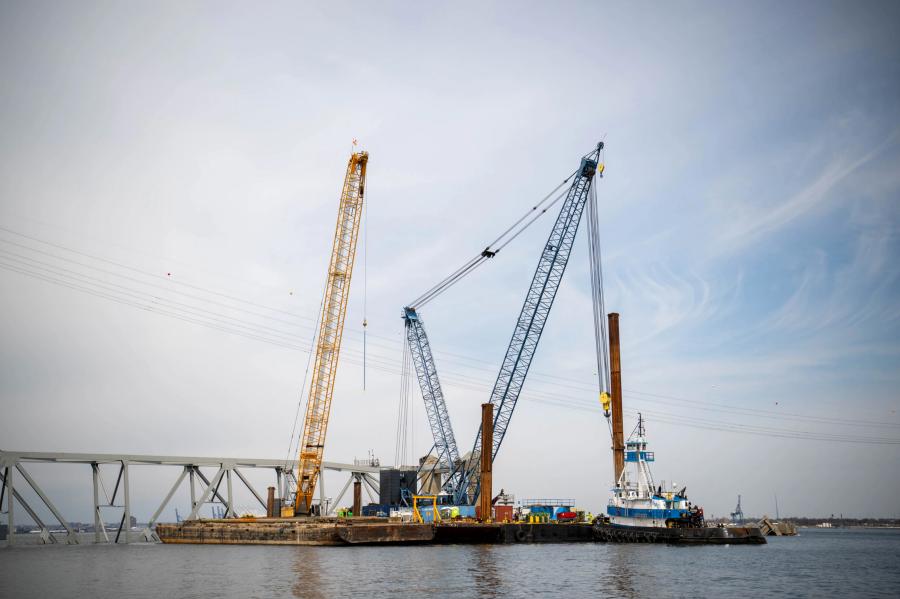
U.S. Coast Guard Petty Officer 2nd Class Taylor Bacon photo
Col. Estee Pinchasin, the district commander of the U.S. Army Corps of Engineers, Baltimore District, observed: "We don't send anybody into the water on a hunch or a guess." She described the work of removing the debris as a dangerous puzzle. In addition to the debris, the water contains downed electrical wires, gas lines and other utilities.
Pinchasin estimates that the removal of the massive trusses could take as long as a week apiece. "You lug one thing out, redo an engineering assessment and lug the next thing out," she said.
She spoke with great feeling that the Army Corps is committed to recovering the remains of those who died in the tragic accident.
"We are careful with every lift." Knowing how the remains may be trapped is "going to change how we go about lifting the wreckage … to ensure that we can honor the fallen."
"There are four people somewhere here," Pinchasin said, adding her team is "committed to making sure that we can find them."
An official from the Environmental Protection Agency highlighted a pressing concern about the Dali. More than 700 tons of hazardous materials remain onboard, including 56 cargo containers containing corrosives, flammable liquids and lithium-ion batteries that had broken open.
An initial $60 million in aid for Baltimore recently arrived from the Federal Highway Administration's emergency relief. Maryland could end up requesting more than $600 million for Key Bridge recovery from the relief fund. Observers estimate that rebuilding the Francis Scott Key Bridge will cost hundreds of millions of dollars and will require at least a year.
Stopping a vessel the size of the Dali, which caused the Key Bridge to collapse, might not be possible. However, engineers and construction teams are taking steps that could deflect and nudge huge vessels enough to avoid the destruction of important bridges.
Several alternatives are already in place and showing promise.
New York City has several significant bridges over the Hudson and East Rivers that have been armored against collisions with large concrete pedestals to absorb impact while smaller bridges on the Harlem River utilize fender systems on their bases. Much like fenders on trucks and older model cars, fender systems are designed to absorb impact from barges or large ships and prevent catastrophic damage to the bridges.
In 2023, officials from a joint New Jersey and Delaware bridge authority announced work on eight 80-ft.-wide, stone-filled cylinders designed to protect the Delaware Memorial Bridge. The bridge tower piers were built in the early 1950s. The protection will cost nearly $100 million. Officials hope it will be like a large insurance policy that will never need to be used.

U.S. Coast Guard Petty Officer 2nd Class Taylor Bacon photo
"The current bridge tower pier protection systems are original to each span and today's tankers and ships are bigger and faster than those of the 1950s and 1960s," said Thomas J. Cook, executive director of the bi-state agency. "Millions of people rely on the Delaware Memorial Bridge to move products, visit family or commute to work on a daily basis. It's our responsibility to make sure that this essential I-95 transportation link is properly maintained and enhanced for the benefit of future generations."
The Delaware River and Bay Authority (DRBA) has chosen to install a collision protection system of eight cells, each measuring 80 ft. in diameter. The cells should protect the piers supporting both the western and eastern towers from catastrophic bridge strikes. The cells will be filled with rock, steel or concrete.
Other types of reinforcement could include timber cribbing and sheet pile structures that could absorb impact and be cost effective to replace.
Major bridge collapses from being struck by ships are uncommon, but minor collisions are routine. The U.S. Coast Guard gets 35 such reports each day. CEG
Today's top stories



